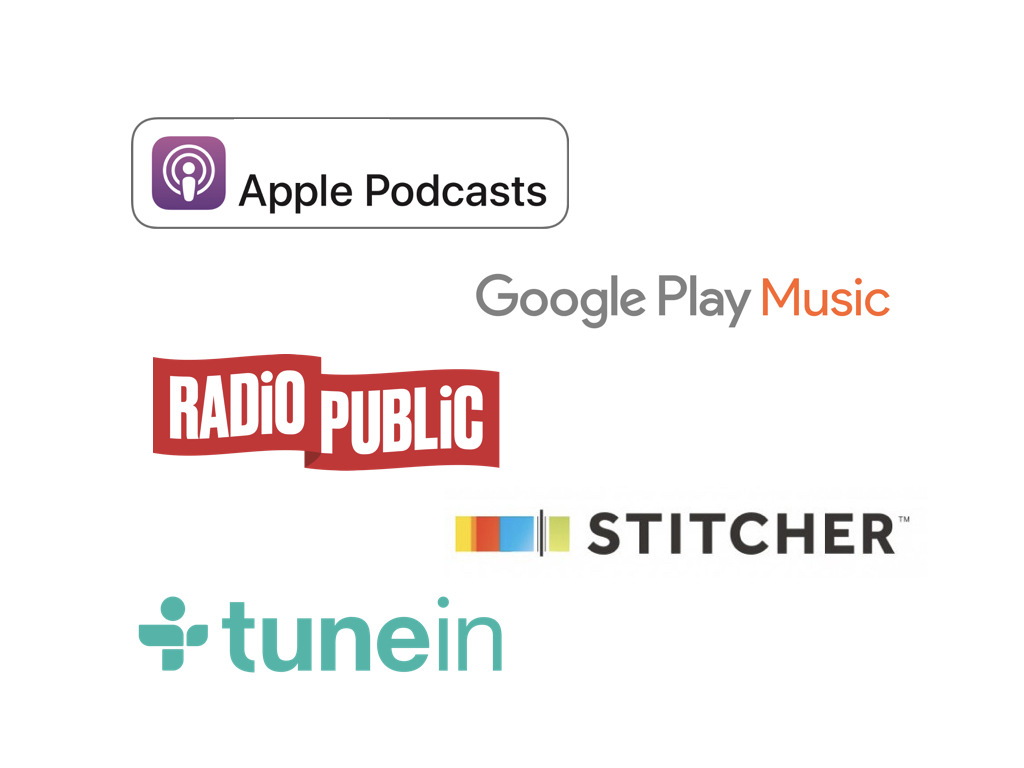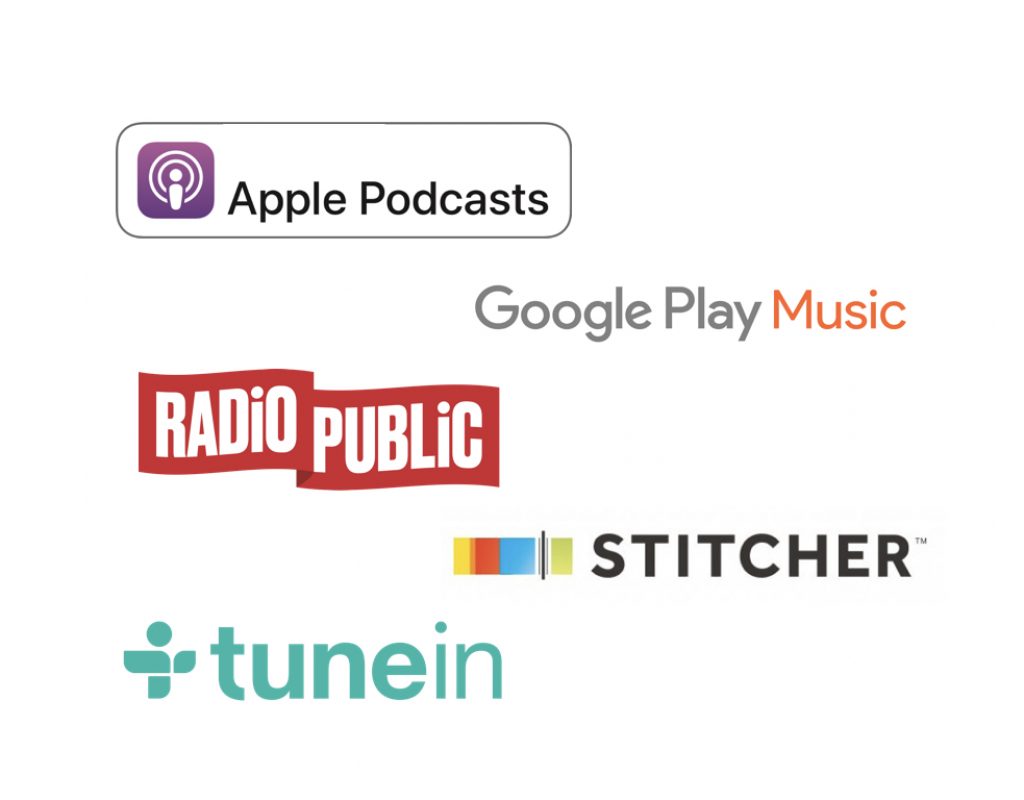
Wherever you decide to host your subscribable on-demand audio/video online content, be it self-hosted or on a so-called “podcast host” (as I covered in a recent review about Spreaker), it is absolutely desirable to syndicate it via many platforms, known as podcast aggregators. However, even though we may choose to syndicate on many, it really only behooves us to promote a select few. Ahead, I’ll cover the 4 I currently promote; which ones I have never promoted, still don’t and why, plus why my CapicúaFM show (which recently surpassed 266,000 listens according to Podtrac) is still listed on those other platforms despite not promoting them.
As I emphasized in my February 2017 article Spreaker platform for the new radio: compelling features + my suggestions (illustrated above), the most important mobile app to promote is your own that is branded with your show name, if you already have one. For the reasons explained in that article, I don’t yet have my own branded app for my shows. That’s why this article is for those (like me) who don’t have one yet. This marketing approach is aimed at novice consumers of this type of on demand content who want to subscribe to my shows or yours. The experienced people in the potential audience already know how to subscribe using their favorite consumption app, which in my case is PocketCasts on Android. But I can’t afford to promote an app like PocketCasts except on my dedicated Subscription page. In all of the other places, I can only promote a few free ones.
In my own promotions for my CapicúaFM show, I emphasize the few platforms/apps that are simple for novices to use and likely to be already installed in their mobile devices, and the least intrusive if they need to be installed. For example, I prefer to exclude (or leave for last on the list) any platform whose mobile app forces a new user to create an account, answer questions about topics he or she likes (for the purpose of offering other shows) and as such, makes her/him jump through hoops before using the app. Otherwise, many people are likely to give up or —after fulfilling all of the requirements— forget that he or she downloaded the app for the specific mission of subscribing to my show or yours. I also promote those platforms that already supply data to measurement services for statistic purposes. I want every possible listen to be included in my stats. Ahead are the exact platforms and why for each.
The 4 I currently promote
Currently, I promote the following:
- Apple Podcasts (It uses the same database as iTunes) because it’s already installed on most iPhone, iPad and iPod Touch devices. Apple Podcasts is also compatible with Apple’s CarTalk (covered in my Android Auto & Apple’s CarPlay have finally landed from November 2016).
- RadioPublic because it’s available for Android (as well as iOS), passes through the original file, maintaining quality. It’s completely compliant with measurement systems, and it’s completely non-intrusive. RadioPublic doesn’t force the consumer to sign up or fill out any survey.
- Stitcher because it’s popular, available for Android (as well as iOS), more recently passes the original file, maintaining quality and it’s compliant with measurement systems. Sadly, Stitcher is intrusive, since it forces the user to sign in 🙁 However, since it is the third on the list I offer, it is only likely to be chosen by those who already have and use it. This is one of those cases where we luck out when we list platforms in alphabetical order 🙂
- TuneIn is happily at the end of the list (the same alphabetical luck as above). It’s very popular (and likely to be previously installed on many people’s mobile phones), compatible with Android, iOS and Android Auto (covered in my Android Auto & Apple’s CarPlay have finally landed from November 2016), and it’s compatible with measurement systems. Sadly, TuneIn is intrusive, since it forces the user to sign in before using it.
The idea is: The potential subscriber glances at the four options. If he or she already uses one of the four, s/he will be likely to pick that one. Otherwise, novice iOS on-demand consumers will likely gravitate to using Apple Podcasts since it’s almost certainly installed in advance if they have a fairly recent version of iOS. Android on-demand consumers will likely gravitate to RadioPublic. The real expert potential subscribers who already use a superior third party app like OverCast (iOS) or PocketCasts (cross platform) already know what to do, and I do mention PocketCasts on my subscription page, but not where the space and attention span is so limited in other places.
Which ones I have never promoted, still don’t and why… and why I am still listed on those platforms anyway
Here are some of the true podcast aggregators, and why I don’t promote them:
Google Play Music
I am still listed there, but I don’t promote it:
- Because podcasts in Google Play Music still works exclusively in the United States and Canada. It’s still broken everywhere else. I have listeners in over 180 countries. I don’t want to send anyone to a place that won’t work.
- Despite Google’s promise to share its Google Play Music podcast stats via an API to the measurement services, it still doesn’t. My CapicúaFM show is listed there for discoverability by new potential listeners, and for people who already use it and prefer it.
iVoox
I still love certain aspects of iVoox (which I first covered back in the 2015 article Embedding audio on the web, Facebook and sometimes even YouTube which is now nearly completely obsolete). However, the iVoox online player stopped working on Facebook (to no fault of iVoox) and the iVoox app on Android is very intrusive for initial users, forcing her/him to login before using the app. Also, it is not clear whether iVoox is properly reporting to measurement services like Podtrac, which is the one I currently use. So —like Google Play Music— my CapicúaFM show is listed on iVoox for discoverability by new potential listeners, and for people who already use it and prefer it.
Now, I’ll list two non-pure places (since they don’t currently work with your RSS feed) where I publish —but never promote— for the exclusive reasons of attracting new listeners:
- YouTube
As I covered in the very recent Auphonic’s animated Audiogram for YouTube & Facebook, I recently started to do it in those places using audiograms. So far, I have done it with full episodes. I may later switch to publishing only promo episodes there.
I appreciate and respect Daniel J. Lewis’s recommendation not to syndicate these audio-only shows on YouTube. Daniel is completely correct with his concern about publishing audio-only on a channel where consumers are expecting video, and he believes that many may people immediately unsubscribe to a YouTube channel when they discover it. However, that doesn’t apply to the way that I do it, since ever since the very first time I published audio-only on YouTube (even before I began with audiograms), it was in the dedicated CapicúaFM YouTube channel. It’s like an audio-only channel on your cable TV service like Atlantic Broadband, Comcast Infinity, AT&T Verse, Rogers. Some people use audio-only channels on cable TV and some don’t, but no one gets upset that they exist. If someone cancels a subscription to an audio-only channel in YouTube, it won’t affect a subscription that the same ex-subscriber may also have an a separate video channel that the audio producer also owns.
Conclusions
I still hope to have a branded show app for CapicúaFM and my upcoming show, SpeakCastilian.com, because I do believe it’s the best way to get novice potential subscribers to subscribe. In the meantime, I hope the above criteria help you make your own decisions about which platforms and apps to promote.
Upcoming articles, reviews, radio shows, books and seminars/webinars
Stand by for upcoming articles, reviews, and books. Sign up to my free mailing list by clicking here. Most of my current books are at books.AllanTepper.com, and my personal website is AllanTepper.com.
Si deseas suscribirte a mi lista en castellano, visita aquí. Si prefieres, puedes suscribirte a ambas listas (castellano e inglés).
Listen to his CapicúaFM show at CapicúaFM.com in iTunes or Stitcher.
FTC disclosure
No manufacturer is specifically paying Allan Tépper or TecnoTur LLC to write this article or the mentioned books. Some of the other manufacturers listed above have contracted Tépper and/or TecnoTur LLC to carry out consulting and/or translations/localizations/transcreations. Many of the manufacturers listed above have sent Allan Tépper review units. So far, none of the manufacturers listed above is/are sponsors of the TecnoTur programs, although they are welcome to do so, and some are, may be (or may have been) sponsors of ProVideo Coalition magazine. Some links to third parties listed in this article and/or on this web page may indirectly benefit TecnoTur LLC via affiliate programs. Allan Tépper’s opinions are his own.
Copyright and use of this article
The articles contained in the TecnoTur channel in ProVideo Coalition magazine are copyright Allan Tépper/TecnoTur LLC, except where otherwise attributed. Unauthorized use is prohibited without prior approval, except for short quotes which link back to this page, which are encouraged!

